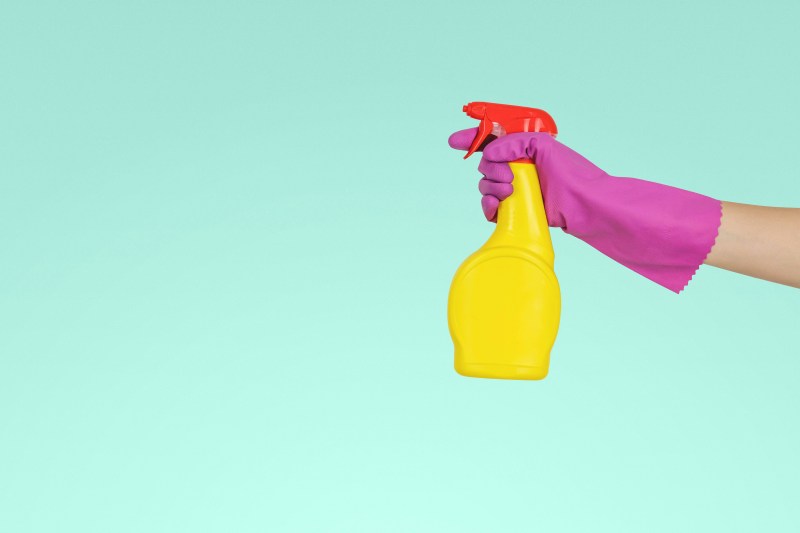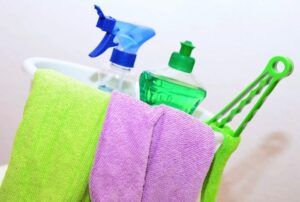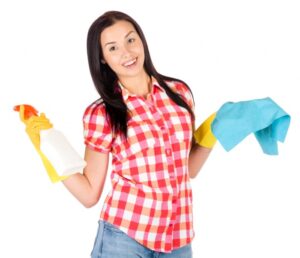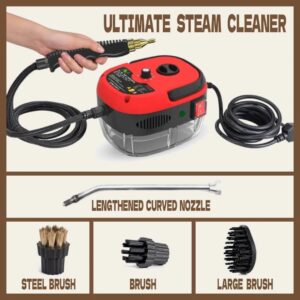
Cleaning tools for pet owners play a crucial role in maintaining a clean and comfortable living space. With the joys of pet ownership come the inevitable messes, from fur to accidents, that can make our homes feel less inviting. Understanding which tools are essential and how to use them effectively can transform the cleaning experience, making it more manageable and even enjoyable.
This guide will explore the top five cleaning tools every pet owner should have, delve into innovative cleaning solutions tailored to pet-related messes, and offer maintenance tips to ensure your tools remain in peak condition. With the right equipment and techniques, you’ll create a welcoming and hygienic environment for both you and your furry friends.
Essential Cleaning Tools for Pet Owners
As a pet owner, maintaining a clean and healthy environment for both you and your furry friends is crucial. Pets can bring joy to our lives, but they also come with their own set of cleaning challenges. Having the right cleaning tools can make a significant difference in managing pet hair, odors, and stains. Below are five essential cleaning tools that every pet owner should consider adding to their cleaning arsenal to ensure a pet-friendly home.
Top 5 Cleaning Tools
These tools are important for effectively managing the mess that pets can create. Each tool serves a specific purpose and, when used properly, can help maintain the cleanliness of your home.
- Vacuum Cleaner with Pet Hair Attachment
Powerful suction combined with specialized attachments is key to removing pet hair from carpets and upholstery.
A vacuum cleaner designed specifically for pet hair has features like stronger suction and specialized brushes that lift pet hair effectively. Regularly vacuuming can significantly reduce allergens and pet dander in your home. Make sure to use the pet hair attachment on furniture, stairs, and in corners where hair tends to accumulate.
Aim for at least once a week or more frequently during shedding seasons.
- Lint Rollers
Quick and convenient for removing fur from clothing and fabric surfaces.
Lint rollers are a simple yet effective tool for tidying up pet hair from clothes and soft furnishings. Roll the sticky sheet over the surface to remove hair quickly. Keep a lint roller handy in your car, office, or anywhere you might need to look presentable quickly.
- Enzymatic Cleaner
Designed to break down organic stains and odors caused by pet accidents.
Enzymatic cleaners are specifically formulated to tackle tough stains and odors, such as urine or feces. These cleaners work by breaking down the organic material. Apply the cleaner to the stained area, let it sit for the recommended time, and then blot with a clean cloth. This tool is essential for preserving carpets and upholstery after pet accidents.
- Microfiber Cloths
Highly absorbent and effective for cleaning surfaces without scratching.
Microfiber cloths are versatile and can be used for a variety of cleaning tasks, from wiping down surfaces to polishing furniture. They are gentle yet effective at picking up dust and pet hair. Use them dry for dusting or damp for deeper cleaning; make sure to wash them regularly to maintain their effectiveness.
- Pet-Safe Carpet Shampooer
A great investment for deep cleaning carpets and upholstery.
A pet-safe carpet shampooer can help you maintain the cleanliness of your carpets and upholstery. It effectively removes deep-seated dirt and odors without harsh chemicals. For best results, follow the manufacturer’s instructions and use a shampoo formulated to be safe for pets. Regular use can keep your carpets looking fresh and clean.
Innovative Cleaning Solutions for Pet Messes
As any pet owner knows, dealing with messes is part of the journey. Fortunately, innovative cleaning solutions have emerged to make this task more manageable and effective. These advancements are not only designed to tackle the unique challenges posed by pet stains and odors but also to do so in an environmentally friendly manner. Let’s explore some of the latest technologies and effective approaches available to pet owners today.
Latest Technologies in Cleaning Tools
Recent innovations in cleaning technology have revolutionized the way pet owners address messes. Devices such as self-cleaning litter boxes, robotic vacuums specifically designed to pick up pet hair, and UV light sanitizers are becoming increasingly popular. These tools not only save time but also reduce the effort required to maintain a clean home. For instance, self-cleaning litter boxes use sensors to detect when a cat has used them, automatically sifting waste into a separate compartment.
This keeps the litter box clean longer, reducing odors and requiring less frequent manual cleaning. Robotic vacuums, on the other hand, can be programmed to run daily, ensuring that pet hair is continuously removed from floors, carpets, and upholstery, which is especially beneficial in multi-pet households.
Advantages of Eco-Friendly Cleaning Products
Combining eco-friendly cleaning products with traditional tools provides numerous advantages for pet owners. These products are often free of harsh chemicals that can harm pets and humans alike. Using biodegradable cleaners helps reduce environmental impact while still effectively breaking down pet stains and odors.The following are some key benefits of utilizing eco-friendly cleaning solutions:
- Safety: Non-toxic ingredients ensure a safe environment for pets and humans.
- Effectiveness: Many eco-friendly products are designed to work as effectively as conventional cleaners, often using natural enzymes to break down stains.
- Odor Neutralization: Plant-based ingredients can effectively neutralize pet odors without leaving a harsh chemical scent.
- Reduced Allergens: Natural formulas are less likely to trigger allergies or sensitivities in pets and family members.
Homemade Cleaning Solutions for Pet Stains
Creating homemade cleaning solutions tailored to specific pet-related stains and odors can be a cost-effective and safe alternative to commercial products. Simple ingredients found in most households can tackle a variety of messes. For example, a mixture of white vinegar and water can effectively neutralize odors caused by urine, while baking soda can be sprinkled on carpets to absorb lingering smells.Here are a few tried-and-true recipes for homemade cleaning solutions:
- Vinegar and Water Solution: Mix equal parts of white vinegar and water in a spray bottle. This solution helps eliminate odors and can be used on various surfaces.
- Baking Soda Paste: Combine baking soda with a small amount of water to form a paste. Apply this to stubborn stains, let it dry, then vacuum it up.
- Dish Soap and Hydrogen Peroxide Mixture: Mix a tablespoon of dish soap, a cup of hydrogen peroxide, and a couple of tablespoons of baking soda to create a powerful stain remover perfect for carpets.
“Homemade cleaners not only save money but also allow pet owners to ensure their cleaning methods are pet-safe.”
Maintenance and Care of Cleaning Tools

Maintaining cleaning tools is crucial for every pet owner looking to keep their living space fresh and tidy. Regular upkeep not only extends the life of your equipment but also ensures they perform effectively when tackling pet messes. This guide will provide practical steps to care for your cleaning tools, emphasizing the importance of routine checks and supply replacements.
Cleaning and Maintaining Specific Cleaning Tools
To achieve optimal performance and longevity of your cleaning tools, follow these simple step-by-step maintenance routines for each type: Vacuum Cleaners:
1. Empty the Dust Bin
After each use, remove the dust bin and empty it to prevent clogging.
2. Clean Filters
Regularly check and wash or replace filters as per manufacturer recommendations, typically every 1-3 months.
3. Inspect Brushes and Rollers
Remove hair or debris from the brush rolls and inspect for wear. Replace if necessary.
4. Check Hoses
Ensure hoses are free from blockages and clean them periodically. Brooms and Dustpans:
1. Shake Out Debris
After use, shake the broom outdoors to remove trapped dirt and hair.
2. Wash Bristles
Periodically wash broom bristles in warm soapy water to remove built-up grime.
3. Store Properly
Hang brooms instead of leaning them against walls to maintain bristle shape. Mops:
1. Rinse After Each Use
Rinse mop heads thoroughly after each cleaning session to remove residue.
2. Wash Mop Heads
Machine wash or hand wash mop heads regularly, especially if they have absorbed pet odors.
3. Dry Properly
Ensure mop heads are completely dry before storage to prevent mold and odors. Lint Rollers:
1. Regularly Replace Sheets
Always keep an eye on the sheet count and replace when low.
2. Store in a Cool Place
Keep lint rollers away from heat sources to prevent adhesive failure. Cleaning Sprays and Solutions:
1. Check Expiration Dates
Regularly review the expiration dates on cleaning supplies.
2. Store Properly
Keep cleaning solutions in a cool, dry place and ensure the caps are tightly sealed to avoid spills.Routine checks on cleaning tools and supplies are essential for maintaining effectiveness. Neglected tools may result in ineffective cleaning, leading to more significant issues down the line.
Routine Cleaning Schedule for Pet Owners
Establishing a cleaning routine can help ensure that your tools are always in tip-top shape. Here’s a suggested weekly schedule for pet owners: Daily Tasks:
- Sweep or vacuum high-traffic areas where pets frequent.
- Wipe down surfaces that come into contact with pets using a suitable cleaning solution.
Weekly Tasks:
- Clean vacuum filters and inspect for hair clogs.
- Wash mop heads after deep cleaning floors.
- Replace lint roller sheets as needed.
Monthly Tasks:
- Deep clean all cleaning tools, including brooms and vacuum brushes.
- Check and replace any expired cleaning solutions.
- Inspect cleaning equipment for wear and tear, replacing items as necessary.
By following this structured maintenance and care guide, pet owners can ensure their cleaning tools remain efficient and reliable, making the task of managing pet messes much easier and more effective.
Epilogue

In conclusion, equipping yourself with the right cleaning tools for pet owners not only enhances your home’s cleanliness but also contributes to a happier living space for your pets. By understanding the effectiveness of each tool, utilizing innovative solutions, and maintaining your equipment, you can tackle any pet-related mess with confidence. Embrace these cleaning strategies and enjoy a space that feels fresh and inviting for both you and your beloved companions.
Quick FAQs
What are the best types of vacuum cleaners for pet hair?
Bagless vacuum cleaners with strong suction and specialized pet hair attachments are highly effective for pet hair removal.
How often should I clean my pet’s bedding?
It’s best to wash pet bedding at least once a week to keep it free of odors and allergens.
Can I use regular cleaning products around my pets?
Many standard cleaning products can be harmful to pets; it’s advisable to use pet-safe or eco-friendly cleaners.
How do I remove stubborn pet stains from carpets?
Blot the area with warm water, apply a pet stain remover, and gently scrub until the stain lifts, then rinse.
What maintenance do cleaning tools require?
Regularly empty bags or canisters, clean filters, and check brushes for hair buildup to maintain your cleaning tools.




